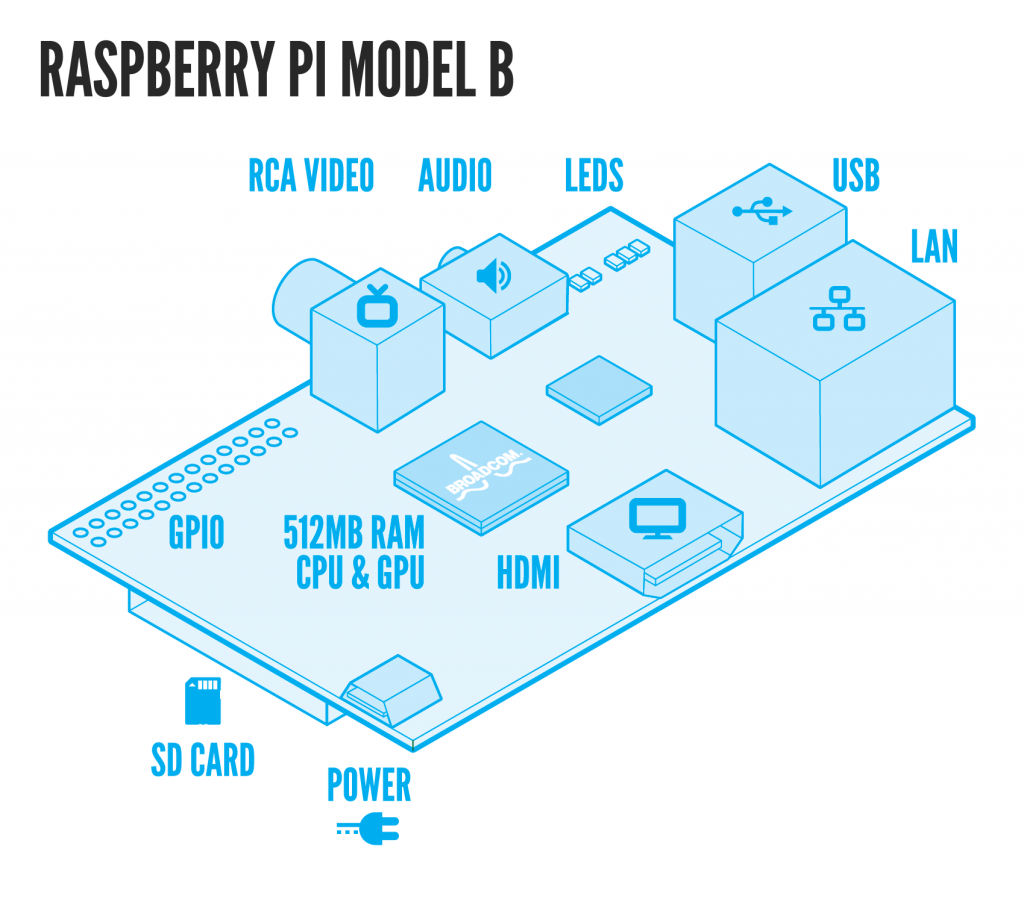What is it?
Unless you've been hiding under a rock, I'm sure you're already somewhat familiar with the Raspberry Pi. So, I'll start with a brief introduction and refer to other sources of additional details at the end of the post.
The Raspberry Pi (hereafter referred to as the Pi) is a credit-card sized computer that was originally developed by the Raspberry Pi Foundation in the UK. The foundation's intent was to provide a low-priced, single board computer that could be used for educational purposes. But, since its initial introduction the Pi has also garnered wide-scale interest among hobbyists, looking to experiment with the low-cost computing platform. This interest rapidly gained momentum with the introduction of a second level of Pi hardware, which clearly divided the product line into $25 and $35 tiers.
The $25 versions are less capable than the $35 versions (they lack USB and Ethernet ports, for example). So, for all intents and purposes they are purely to provide a lower-cost alternative where such capabilities are not needed. In this blog I'll focus on the latest iteration of the $35 Pi, which as of this posting is Model-B Rev 2 (see diagram below) and easily distinguished by its 512MB of RAM and two USB ports. If you're in the market for a new Pi, I highly recommend you purchase this latest revision, since it offers the widest range of flexibility.
 |
| Model B Layout from http://www.raspberrypi.org/faqs |
 |
| My Raspberry Pi setup (inside a case) |
Why do I want one?
So, the next question you're probably asking yourself is why you'd want one of these tiny computers? What can you possibly do with it? Well, that's a good question and honestly doesn't have a simple answer. But, that's not necessarily a bad thing. The answer isn't simple because the possibilities are rapidly expanding, almost on a daily basis. For example, maybe you'd like to use the Pi to control home automation. Or maybe you'd like to use it as a simple AirPlay® receiver. Or maybe to learn to program. Or maybe as a home theater PC (HTPC). Or maybe to control a robot. Or maybe. Okay, I think you get the idea. Whatever your motivation, I believe you'll find the Pi suitable for many of the tasks you'd like to accomplish. With my subsequent blog posts I hope to introduce you to some of these cool ideas and walk you through the steps to get your tasty Pi baking!
Where can I get one?
The popularity of the Pi caused higher demand than the Raspberry Pi Foundation originally anticipated, resulting in several-month waits to receive purchased boards. Though this wait time has lessened some with the introduction of a new board manufacturer, it still may take several weeks to receive your board. For US customers you can purchase the Pi from the foundation's recommended suppliers, such as Element14 or Allied Electronics. In addition, you can find the Pi at other online suppliers, such as MCM Electronics, Amazon or eBay.
Additional information
If you're interested in finding out more technical details regarding the Pi please refer to the sites below.
Raspberry Pi Foundation
Wikipedia: Raspberry Pi
In my next post we'll discuss the supporting hardware you'll need to get your Pi up and running. Until next time, Happy Baking!
No comments:
Post a Comment